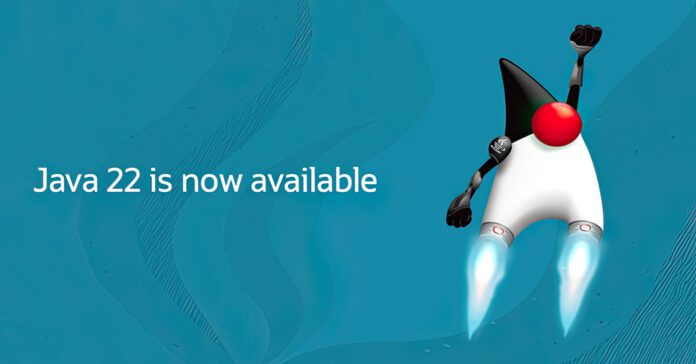Java has been a cornerstone of the programming world for decades, continually evolving to meet the needs of developers and the changing landscape of technology. The release of Java 22 continues this tradition, bringing a host of new features, enhancements, and improvements. In this comprehensive guide, we will delve into what’s new in Java 22, exploring its features, benefits, and how it can enhance your development experience.
Overview of Java 22
Java 22 builds upon the strong foundation of previous versions, introducing new capabilities that make it more powerful and efficient. Key areas of focus for this release include performance enhancements, improved security, and the addition of new language features that aim to make Java more expressive and easier to use.
Performance Improvements
1. Enhanced Garbage Collection
Java 22 introduces significant improvements to garbage collection (GC) mechanisms. The new Garbage First (G1) GC algorithm has been optimized to provide better performance and lower latency. This is particularly beneficial for applications with large memory footprints and high throughput requirements.
Key Improvements:
- Reduced Pause Times: The G1 GC has been fine-tuned to minimize pause times, making it more suitable for latency-sensitive applications.
- Improved Throughput: Enhancements in the G1 algorithm result in better overall throughput, allowing applications to run more efficiently.
- Concurrent Thread Management: Improved management of concurrent GC threads helps in balancing the load and reducing contention.
2. Just-In-Time (JIT) Compiler Enhancements
The JIT compiler has been further optimized in Java 22 to improve the performance of Java applications. These enhancements include better inlining, loop unrolling, and dead code elimination, leading to faster execution times.
Key Enhancements:
- Dynamic Compilation: Improved heuristics for dynamic compilation help in optimizing code paths that are frequently executed.
- Profile-Guided Optimizations: The JIT compiler can now utilize runtime profiles more effectively to guide optimizations, resulting in better performance.

New Language Features
1. Pattern Matching for switch Expressions
Pattern matching for switch expressions is a major new feature in Java 22. This enhancement makes switch statements more powerful and expressive by allowing complex data structures to be deconstructed and matched directly in the switch statement.
Example:
1 2 3 4 5 6 7 8 9 10 11 12 13 14 15 16 17 18 | record Circle(double radius) implements Shape {} record Rectangle(double length, double width) implements Shape {} record Square(double side) implements Shape {} public class PatternMatchingSwitch { public static void main(String[] args) { Shape shape = new Rectangle(10, 20); switch (shape) { case Rectangle r -> System.out.println("Rectangle with length: " + r.length() + " and width: " + r.width()); case Square s -> System.out.println("Square with side: " + s.side()); default -> System.out.println("Unknown shape"); } } } |
This feature simplifies code and reduces the need for boilerplate type-checking and casting.
2. Record Patterns
Building on the introduction of records in Java 16, Java 22 adds support for record patterns. Record patterns allow for more concise and readable code when working with record types.
Example:
1 2 3 4 5 6 7 8 9 10 11 | public class RecordPatternExample { public static void main(String[] args) { Point point = new Point(3, 4); if (point instanceof Point(int x, int y)) { System.out.println("Point coordinates: " + x + ", " + y); } } } |
Record patterns make it easier to work with immutable data structures and enhance code readability.
3. Sealed Classes and Interfaces
Sealed classes and interfaces, first previewed in Java 17, are now fully supported in Java 22. Sealed types provide a way to restrict the set of subclasses or implementations that can extend or implement a class or interface.
Example:
1 2 3 4 5 6 7 8 9 10 11 12 13 14 15 16 | public sealed interface Shape permits Circle, Rectangle, Square {} public final class Circle implements Shape { private final double radius; // constructor, getters, and other methods } public final class Rectangle implements Shape { private final double length, width; // constructor, getters, and other methods } public final class Square implements Shape { private final double side; // constructor, getters, and other methods } |
Sealed types enhance the design of APIs by providing more control over inheritance hierarchies.
Improved Security Features
1. Enhanced Cryptographic Algorithms
Java 22 introduces support for new cryptographic algorithms and enhancements to existing ones. This includes better support for elliptic-curve cryptography (ECC) and updates to TLS protocols to improve security.
Key Enhancements:
- Advanced Encryption Standard (AES): Improved performance and security for AES encryption.
- Elliptic-Curve Cryptography (ECC): Enhanced support for ECC, providing stronger security with shorter key lengths.
- TLS 1.3: Full support for TLS 1.3, offering improved performance and security over previous versions.
2. Enhanced Security Manager
The Security Manager in Java 22 has been enhanced to provide better isolation and control over code execution. These improvements make it easier to enforce security policies and protect against malicious code.
Key Features:
- Granular Permissions: More granular control over permissions allows for finer security policy enforcement.
- Enhanced Logging: Improved logging capabilities help in auditing and monitoring security-related events.
Enhanced Developer Productivity
1. Improved Tooling
Java 22 comes with enhanced tooling support, making it easier for developers to write, debug, and maintain their code. The Java Development Kit (JDK) includes updates to popular tools such as the Java compiler (javac), Java Virtual Machine (JVM), and debugging tools.
Key Improvements:
- javac Enhancements: Better error messages and improved compilation performance.
- JVM Improvements: Enhanced performance monitoring and debugging capabilities.
- Integrated Development Environment (IDE) Support: Improved support in popular IDEs like IntelliJ IDEA, Eclipse, and NetBeans.
2. Enhanced APIs
Several new APIs and enhancements to existing ones have been introduced in Java 22 to make development more efficient and expressive.
Notable Enhancements:
- Collections API: New methods for working with collections, such as convenient factory methods and stream enhancements.
- Concurrency Utilities: Improved support for concurrent programming, including new utilities in the
java.util.concurrentpackage. - I/O Enhancements: Better support for asynchronous I/O and improved file handling capabilities.
New and Improved Libraries
1. Vector API
The Vector API, introduced as an incubator feature in Java 16, is now fully supported in Java 22. The Vector API provides a way to express vector computations that reliably compile to optimal vector hardware instructions on supported CPU architectures.
Example:
1 2 3 4 5 6 7 8 9 10 11 | import jdk.incubator.vector.*; public class VectorExample { public static void main(String[] args) { VectorSpecies<Integer> species = IntVector.SPECIES_128; IntVector vector = IntVector.fromArray(species, new int[]{1, 2, 3, 4}, 0); IntVector result = vector.mul(2); result.intoArray(new int[4], 0); System.out.println(result); } } |
The Vector API allows for significant performance improvements in numerical and scientific computing applications.

2. Foreign Function & Memory API
The Foreign Function & Memory API provides a way to access foreign memory and call foreign functions directly from Java. This API is crucial for applications that need to interface with native libraries.
Key Features:
- Memory Access: Direct access to native memory, allowing for efficient data manipulation.
- Foreign Function Calls: Ability to call native functions from Java, bridging the gap between Java and native code.
Example:
1 2 3 4 5 6 7 8 9 10 11 12 13 14 15 16 17 18 | import jdk.incubator.foreign.*; import java.lang.invoke.MethodHandle; public class ForeignFunctionExample { public static void main(String[] args) throws Throwable { SymbolLookup lookup = SymbolLookup.loaderLookup(); MemorySegment printf = lookup.lookup("printf").get(); MethodHandle printfHandle = CLinker.getInstance().downcallHandle( printf, MethodType.methodType(int.class, CLinker.C_POINTER, int.class), FunctionDescriptor.of(CLinker.C_INT, CLinker.C_POINTER, CLinker.C_INT) ); String msg = "Hello, Foreign Function API!"; try (MemorySegment cString = CLinker.toCString(msg)) { printfHandle.invoke(cString.address(), 42); } } } |
The Foreign Function & Memory API enhances Java’s capabilities in system-level programming.
Community and Ecosystem
1. OpenJDK Contributions
Java 22 includes numerous contributions from the OpenJDK community. These contributions come from a diverse set of individuals and organizations, highlighting the collaborative nature of Java’s development.
Notable Contributions:
- Performance Improvements: Contributions aimed at optimizing the performance of the JVM and JDK.
- Bug Fixes: A large number of bug fixes and enhancements based on community feedback.
2. Ecosystem Growth
The Java ecosystem continues to grow, with a wide array of libraries, frameworks, and tools available to developers. Java 22 benefits from this rich ecosystem, offering better integration and support for modern development practices.
Popular Libraries and Frameworks:
- Spring Framework: Enhancements to support new Java 22 features.
- Hibernate: Improved integration with the latest Java features.
- Maven/Gradle: Updated plugins and tools to support Java 22 development.
Migration to Java 22
1. Preparing for Migration
Migrating to Java 22 involves several steps to ensure a smooth transition. Developers should start by reviewing the release notes and documentation to understand the changes and new features.
Migration Steps:
- Review Release Notes: Understand the new features and changes in Java 22.
- Update Dependencies: Ensure that all dependencies are compatible with Java 22.
- Run Tests: Thoroughly test applications to identify any issues or incompatibilities.
- Leverage New Features: Refactor code to take advantage of new features and improvements.
2. Compatibility Considerations
Java 22 maintains a high level of backward compatibility, but developers should be aware of any deprecated features and removed APIs. Reviewing the compatibility guide can help in identifying potential issues.
Key Considerations:
- Deprecated Features: Identify and replace any deprecated features.
- Removed APIs: Ensure that code does not rely on any removed APIs.
- Performance Testing: Conduct performance testing to ensure that the application benefits from the improvements in Java 22.
Conclusion
Java 22 represents a significant step forward in the evolution of the Java platform. With its performance enhancements, new language features, improved security, and enhanced developer productivity, Java 22 is poised to empower developers to build more robust, efficient, and secure applications.
As you explore the new features and capabilities of Java 22, take advantage of the rich ecosystem of tools, libraries, and community resources available. Whether you are building enterprise applications, web services, or scientific computing applications, Java 22 offers the features and performance you need to succeed.
Useful Links
By staying updated with the latest features and improvements in Java 22, you can ensure that your applications remain cutting-edge, efficient, and secure. Embrace the new capabilities of Java 22 and take your development projects to the next level. Stay tuned for more in-depth articles and tutorials on leveraging Java 22 for your development needs.



